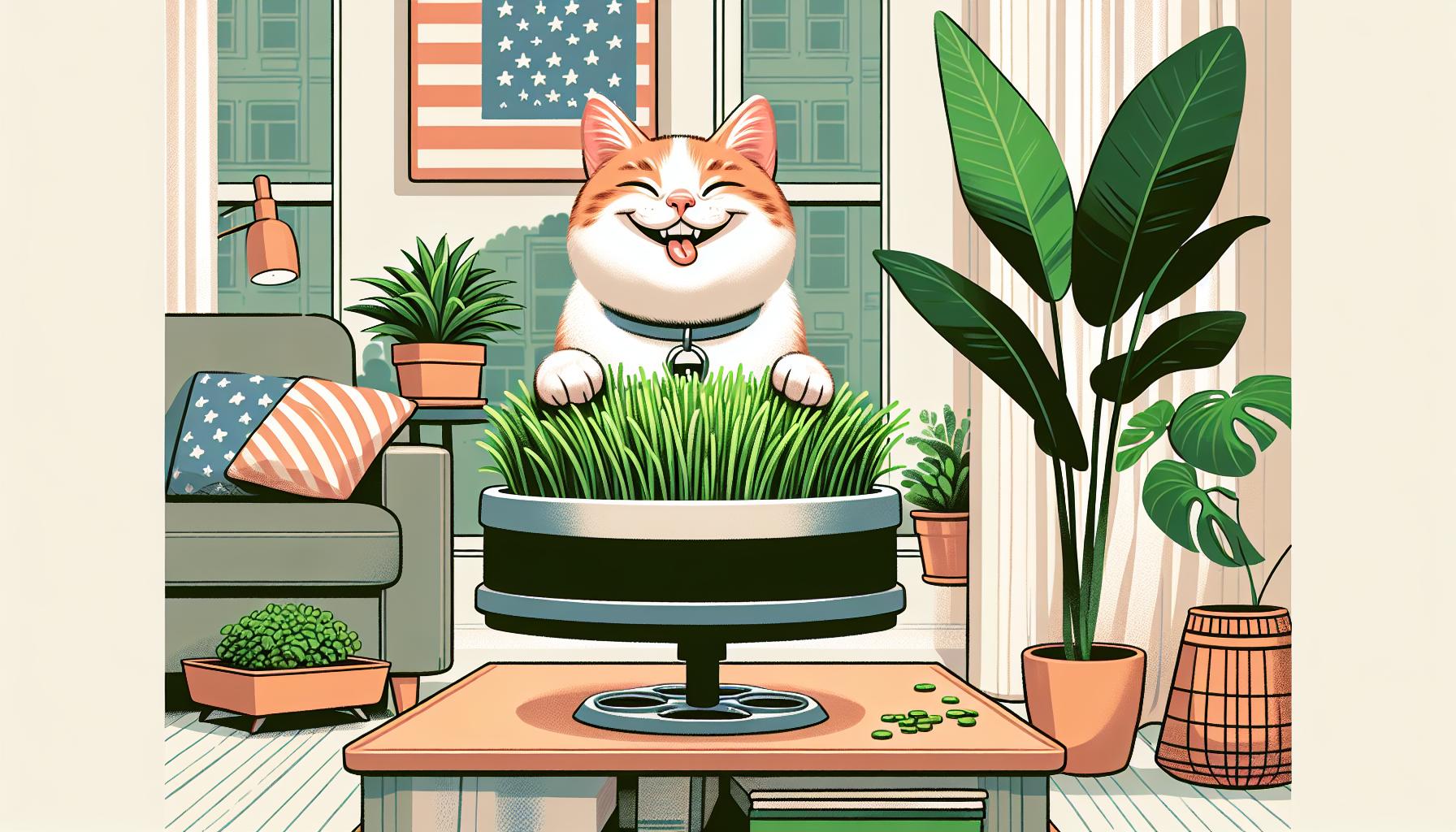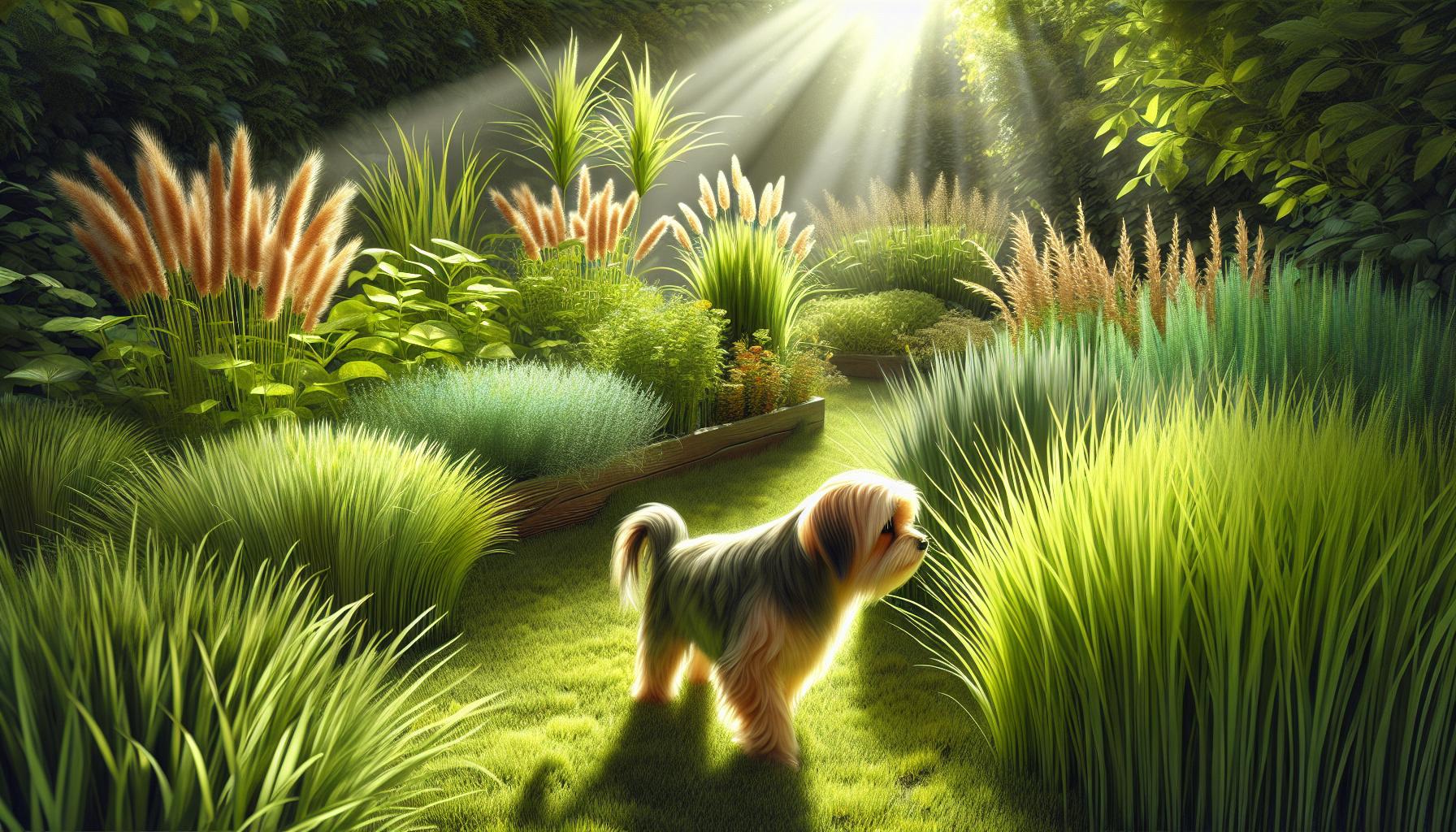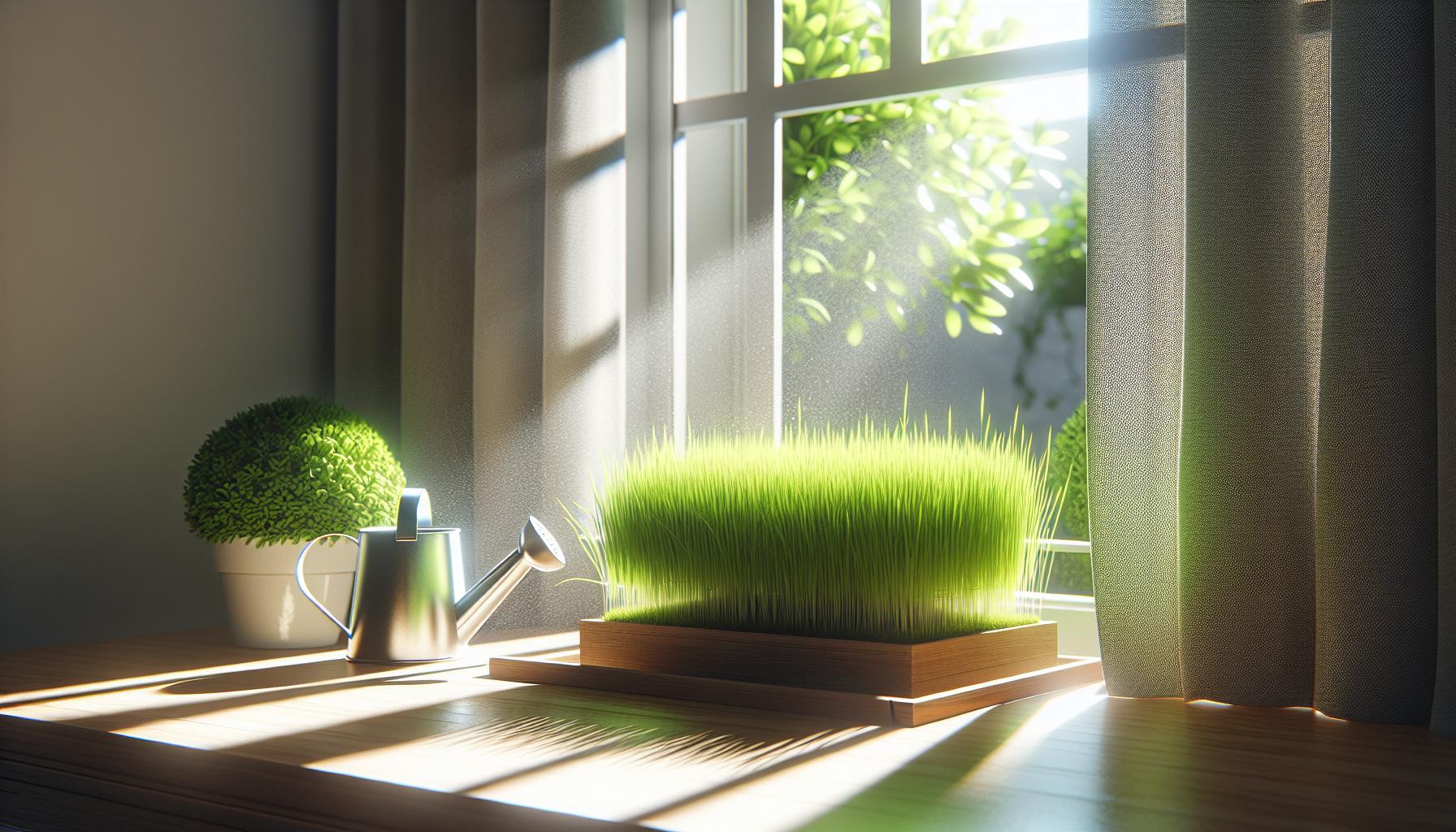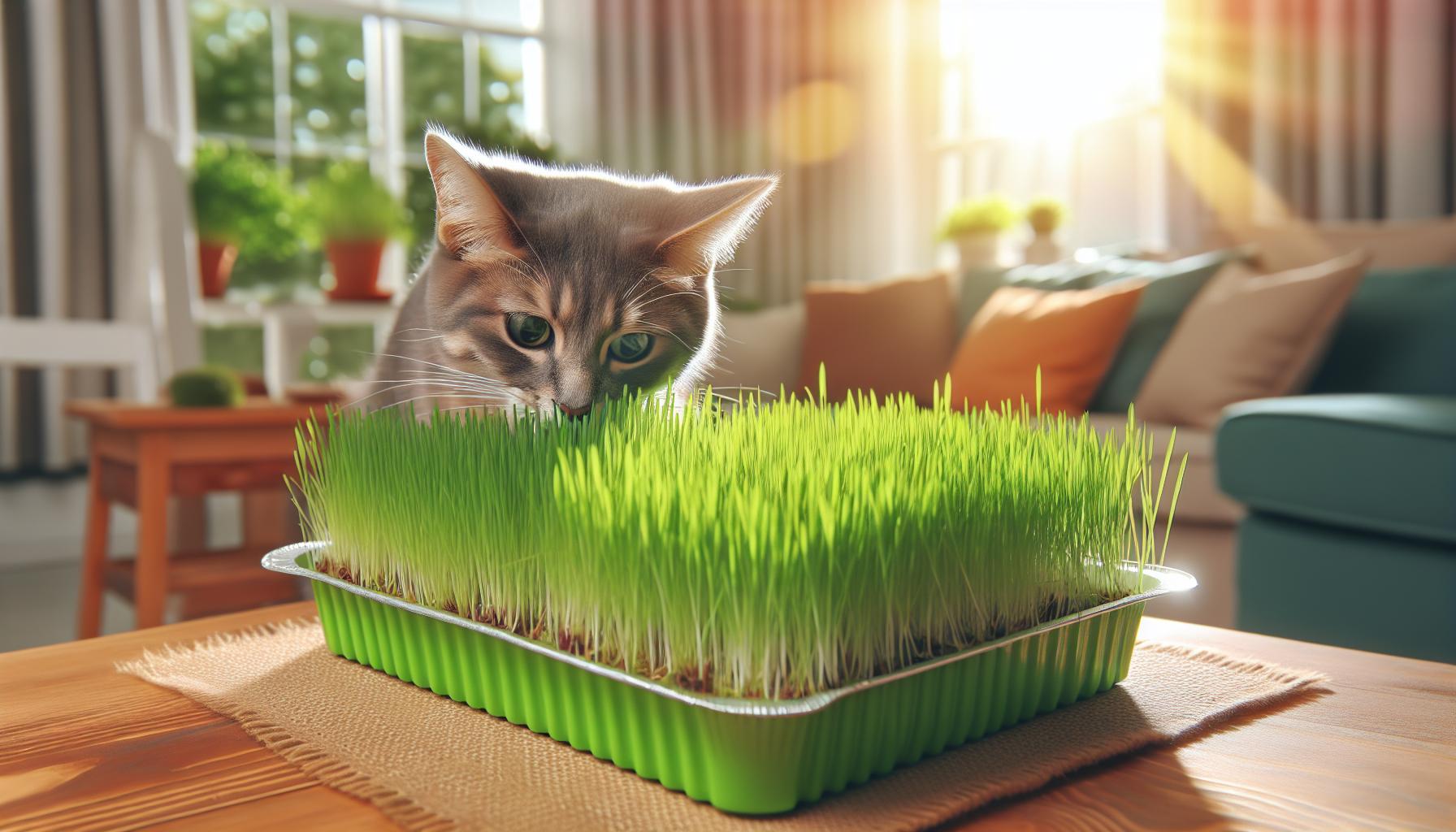When I first heard about pet grass, I was intrigued. It’s not just a trendy addition to your home but a simple way to keep your furry friends happy and healthy. Pet grass is a type of plant specifically grown for pets to nibble on, offering natural benefits that can improve their well-being.
Whether you’ve got a curious cat or a playful pup, pet grass can be a game-changer. It’s packed with essential nutrients and can even aid digestion or satisfy their instinct to chew. Plus, it’s a safe, non-toxic alternative to houseplants that might be harmful to your pets.
If you’re looking for an easy way to enhance your pet’s lifestyle, pet grass might be just what you need. Let’s dive into what makes it so special and why it’s become a favorite for pet owners everywhere.
What Is Pet Grass?
Pet grass refers to a specific type of grass cultivated for pets to consume safely. Common varieties include wheatgrass, barley grass, and oat grass. These grasses provide vitamins, minerals, and fiber that support pets’ health.
Non-toxic and easy to grow, pet grass serves as an alternative to harmful plants that pets might encounter indoors. It can reduce nibbling on unsuitable items by satisfying natural chewing behaviors. Often kept in small pots or trays, it can be placed conveniently in homes.
Pet grass offers multiple benefits for pets like cats, dogs, and small animals. For example, it promotes better digestion by aiding the passage of fur in cats or easing stomach discomfort in dogs. By adding pet grass to a pet’s environment, owners create a safe and enriching space.
Benefits Of Pet Grass

Pet grass enhances the well-being of pets and offers practical advantages for pet owners. Its nutritional value and accessibility make it a valuable addition to any pet’s environment.
For Pets
Pet grass supports digestive health by aiding in the breakdown of consumed food. It contains fiber, which helps regulate bowel movements and prevent constipation. For example, wheatgrass offers mild laxative effects that can ease stomach discomfort.
It satisfies instincts by providing a safe outlet for chewing behaviors. Animals like cats and rabbits naturally chew on grass to soothe irritation or aid hairball elimination. Pet grass fulfills this need without exposing them to harmful plants.
It offers essential nutrients, including vitamins A, C, and E, which contribute to immune support and healthy fur. Barley grass, for instance, provides antioxidants that promote cellular health and reduce inflammation.
For Pet Owners
Pet grass prevents damage to household plants by redirecting animals. Pets nibble on grass instead of toxic or decorative items, protecting plants and reducing replacement costs.
It’s easy to maintain, requiring minimal care with simple watering and occasional trimming. Growing pet grass indoors or outside ensures constant availability for pets.
It promotes a cleaner environment by reducing hairball incidents and aiding litter box habits. Grass consumption helps prevent messes caused by regurgitation, which simplifies home upkeep.
Types Of Pet Grass

Pet grass comes in several varieties, offering unique benefits for pets. The most popular options include wheatgrass, barley grass, and oat grass, each providing essential nutrients and safe chewing opportunities.
Wheatgrass
Wheatgrass stands out for its high nutrient content and health benefits. It’s rich in vitamins A, C, and E and contains chlorophyll, which supports detoxification and immune health in pets. Wheatgrass aids digestion while providing fiber that regulates bowel movements. This variety grows quickly, making it a convenient choice for maintaining a steady supply.
Barley Grass
Barley grass offers a mild, earthy flavor that many pets find appealing. It’s packed with antioxidants and enzymes that support overall well-being. Barley grass also contains dietary fiber, contributing to improved digestive health for pets with sensitive stomachs. Its tender texture makes it easy for small animals like rabbits and guinea pigs to chew.
Oat Grass
Oat grass provides a gentle yet nutrient-rich option for pets. It’s an excellent source of vitamins B and C, assisting with energy metabolism and immune function. The soft blades of oat grass are ideal for pets with delicate teeth, such as young kittens or older cats. Oat grass also helps reduce hairballs and supports natural chewing behavior.
How To Grow Pet Grass At Home

Growing pet grass at home is simple, cost-effective, and ensures freshness, making it a great choice for pets’ well-being. Using basic materials and a few steps, I can cultivate a sustainable, healthy source of nutrients for my pet.
Materials Needed
- Container: A shallow pot or tray with drainage holes to prevent overwatering.
- Soil: Organic potting soil free of pesticides and fertilizers.
- Seeds: Wheatgrass, barley grass, or oat grass seeds.
- Spray Bottle: For moistening the seeds and soil evenly.
- Filtered Water: Essential for avoiding chemicals found in tap water.
- Prepare the Container: Fill the container with soil, leaving 1–2 inches of space at the top. Press lightly to level the surface.
- Soak the Seeds: Rinse seeds in water and soak them for 8–12 hours to enhance germination.
- Plant the Seeds: Spread the soaked seeds evenly across the soil’s surface. Cover with a thin layer of soil.
- Water and Cover: Lightly mist the soil using the spray bottle and cover the container with a translucent plastic sheet to maintain moisture.
- Place in Indirect Light: Position the container in a warm spot with indirect light, avoiding direct sunlight that may dry the soil.
- Monitor and Water: Check daily and mist as needed to keep the soil damp but not soggy. Ensure proper drainage.
- Harvest the Grass: Trim the grass when it reaches 4–6 inches, usually within 7–10 days, using scissors to cut above the soil line.
Caring For Pet Grass

Pet grass thrives with minimal maintenance, provided its basic requirements are met. Proper care ensures healthy growth and constant availability for pets.
Watering Tips
I water pet grass lightly, keeping the soil consistently moist but avoiding oversaturation. Using a spray bottle distributes water evenly without disturbing the roots. I water 2–3 times per week, depending on the humidity level, and ensure any excess water drains to prevent root rot. When the topsoil feels dry to the touch, I add water immediately.
Proper Placement
I place pet grass in a location with indirect sunlight to promote growth without scorching the blades. A windowsill or shaded patio works best, ensuring the grass receives 4–6 hours of light daily. I keep it away from areas with high foot traffic to minimize stress and prevent pets from trampling it. If grown indoors, proper air circulation maintains its freshness.
Conclusion
Pet grass is a simple yet impactful way to enhance your pet’s well-being while creating a safer and more enriching environment. Its nutritional benefits, ease of maintenance, and ability to satisfy natural instincts make it a valuable addition for any pet owner. By growing pet grass at home, you’re not only supporting your pet’s health but also fostering a cleaner, more harmonious living space.
Frequently Asked Questions
What is pet grass, and why is it good for pets?
Pet grass is a non-toxic plant grown specifically for pets. It provides essential nutrients, aids digestion, satisfies natural chewing instincts, and reduces the risk of pets chewing on harmful houseplants.
What types of pet grass are available?
Common types include wheatgrass, barley grass, and oat grass. Wheatgrass offers nutrients and detox benefits, barley grass is gentle on sensitive stomachs, and oat grass helps reduce hairballs and supports delicate teeth.
How does pet grass promote digestive health?
Pet grass contains fiber that aids digestion, regulates bowel movements, and soothes stomach discomfort. It also helps with breaking down food, especially for animals prone to digestive issues.
Is pet grass safe for all pets?
Yes, pet grass is safe for cats, dogs, rabbits, and other small animals. It is non-toxic and provides a safe alternative to potentially harmful houseplants.
How can pet grass protect household plants?
By providing pet grass as a chewing outlet, pets are less likely to nibble on decorative plants, reducing damage and saving homeowners the cost of replacements.
How do I grow pet grass at home?
To grow pet grass, use a shallow pot, organic soil, and seeds. Plant the seeds, water lightly, and place in indirect sunlight. Grass is ready to harvest when it reaches 4–6 inches in height.
How much maintenance does pet grass require?
Pet grass needs minimal care. Water 2–3 times a week to keep the soil moist, ensure it gets 4–6 hours of indirect sunlight daily, and keep it in a stress-free environment.
What nutrients does pet grass offer?
Pet grass is rich in vitamins A, C, and E, which support immune health and a shiny coat. It also contains fiber and other nutrients to promote overall well-being.
Can pet grass reduce hairball issues in pets?
Yes, pet grass can help reduce hairball incidents in cats and certain small animals by aiding digestion and fiber intake, ensuring smoother processing of ingested hair.
Is it costly to grow pet grass?
Growing pet grass is cost-effective. With low upfront costs for seeds, soil, and pots, it offers a sustainable and fresh source of nutrients for pets.
